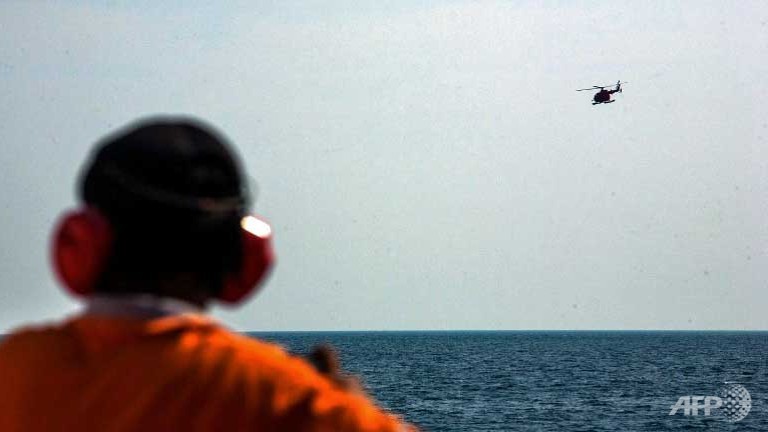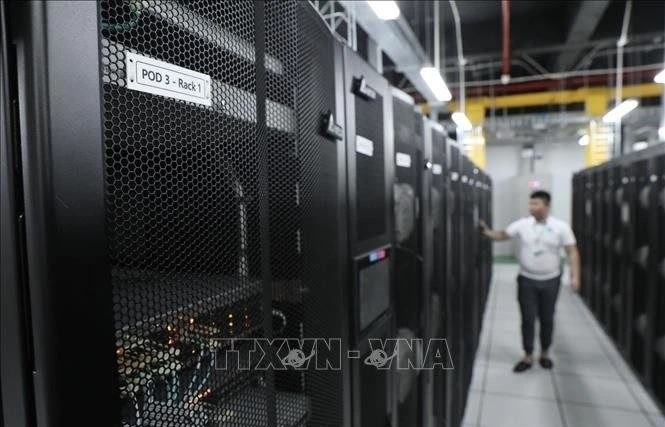Malaysia asks US for undersea surveillance gear in plane search

A member of Indonesia's National Search and Rescue looks on as a helicopter flies over the waters during search operations in the Andaman sea area around northern tip of Indonesia's Sumatra island for the missing Malaysian Airlines flight MH370.
(AFP/CHAIDEER MAHYUDDIN)
>> Australia widens MH370 search area as hunt ramps up
>> No sign of Malaysian jet; search will be "long haul"
WASHINGTON: Malaysia on Friday asked the United States to provide undersea surveillance technology to help in the search for the wreckage of a missing airliner, Pentagon officials said.
The request came as a near two-week search failed to find any debris from the Boeing 777 that disappeared off the radar after taking off from Kuala Lumpur on March 8.
In a phone call to Pentagon chief Chuck Hagel, Malaysia's Defence Minister and acting Transport Minister Hishammuddin Hussein "requested that the US consider providing some undersea surveillance equipment," Pentagon spokesman Rear Admiral John Kirby said.
Hagel assured his counterpart that he would "assess the availability and utility of military undersea technology for such a task and provide him an update in the very near future," Kirby said in a statement.
Officials did not say precisely what equipment the Pentagon might provide but the US military has invested heavily in robotic technology designed for undersea surveillance against enemy submarines or torpedoes.
The Malaysian minister thanked Hagel for the US Navy's assistance in the search for Malaysia Airlines Flight 370, which disappeared with 239 passengers and crew in an unprecedented aviation mystery.
Two US Navy maritime surveillance planes, a P-3 Orion and P-8 Poseidon, have been taking part in the search.
The P-8 has flown with Australian aircraft in a search of the southern Indian Ocean, while the P-3 --- which had been combing an area in the Bay of Bengal -- is due to join the search in the southern zone, officials said.
A search effort on Friday of a remote stretch of Indian Ocean concluded "without any sightings," the Australian Maritime Safety Authority (AMSA) said in a statement.
What the stars mean:
★ Poor ★ ★ Promising ★★★ Good ★★★★ Very good ★★★★★ Exceptional
Latest News
More News
- Thailand seeks to promote digital training (November 04, 2024 | 16:14)
- Indonesia attracts foreign investment in technology sector (November 04, 2024 | 16:08)
- Tropical storm Trami leaves at least 24 people dead in Philippines (October 24, 2024 | 17:36)
- Singapore grants conditional approval for solar power import from Australia (October 24, 2024 | 17:27)
- ASEAN digital economy set to reach $2 trillion by 2030 (October 22, 2024 | 15:08)
- Thailand asks Laos to waive visa fee at border checkpoints to boost tourism (October 21, 2024 | 17:23)
- Laos pledges to continue efforts to empower girls (October 21, 2024 | 17:17)
- Chinese electric vehicle maker to build plant in Indonesia (October 21, 2024 | 17:12)
- Vietnam Elevator Association introduces Elevator Safety Application to the world (October 18, 2024 | 09:00)
- A taste of the future - the go-to spot at the Worldchefs Congress & Expo 2024 (October 15, 2024 | 16:11)

















 Mobile Version
Mobile Version